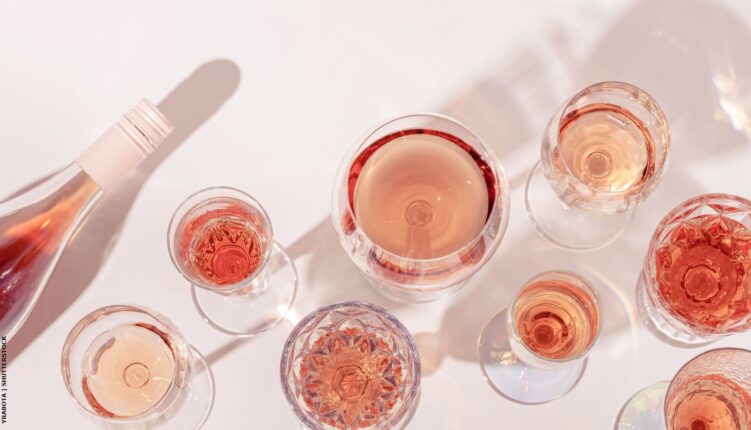Portugal has quite a selection of indigenous grapes. Some of the more well-known ones include Touriga Nacional used for port and dry red wines, Castelão used for a richer red wine, Alvarinho for white wine together with Rabigato and Viosinho (also used in white port).
Perhaps the most-well known of all Portuguese wines, second to port of course, is rosé. A true summer wine in our opinion.
Rosé wines are usually made from red grapes, but not always. The final colour of the wine depends on how long maceration takes place.
Maceration begins the process of wine making – when the unfermented grape juice is cold-soaked with the crushed skins, seeds and grape stalks.
Portuguese rosés range from still, semi-sparkling to sparkling with a wide range of sweet and dry intensities. This means that most people will find a rosé they enjoy.
The first Portuguese rosés
The first Portuguese rosé was introduced in 1943 by Sógrape and in 1944 by Lancer’s.
Sógrape’s rosé was named Mateus and its iconic bottle is said to have been inspired by the flasks used by soldiers in WWI. To this day the bottle has maintained a similar shape.
In the 50s the brand was global with the United Kingdom and the USA being the prime markets. By the late 70s the company was selling Mateus in around 120 countries. At one point Mateus represented 40% of Portugal’s exports!
Lancers started as a rosé called Faísca but soon after its creation, the name was changed.
Originally bottled in hand-moulded earthenware bottles, Lancers fast became a favourite, with the USA being the prime market in the 60s and 70s.
As Mateus did, Lancers bottles have changed over the years although it retains a similar shape.
Today’s rosés
Today many vineyards produce rosé although the modern rosés tend to be still. Ranging from around €6 to €20 a bottle, all budgets can include a bottle of rosé.
For Algarve-produced rosé wines click the links below to find out more before hitting the shops to taste them yourself. But remember, they must be well chilled.
Monte da Casteleja, Lagos – organic wine
Monte do Além, Lagos – organic wine
Quinta do Francês, Odelouca
Morgado de Quintão, Silves
Paxá Wines, Silves
Barranco Longo, Silves
Quinta dos Vales, Lagoa
Not a fan? Try something else
And if you’d like to try out something different, check out how you can serve port wine that will surely impress, it’s not just a drink for Christmas or to be served on its own.
If you’re interested in other Algarve wines, read more here.


3 thoughts on “Rosé –a summer wine”